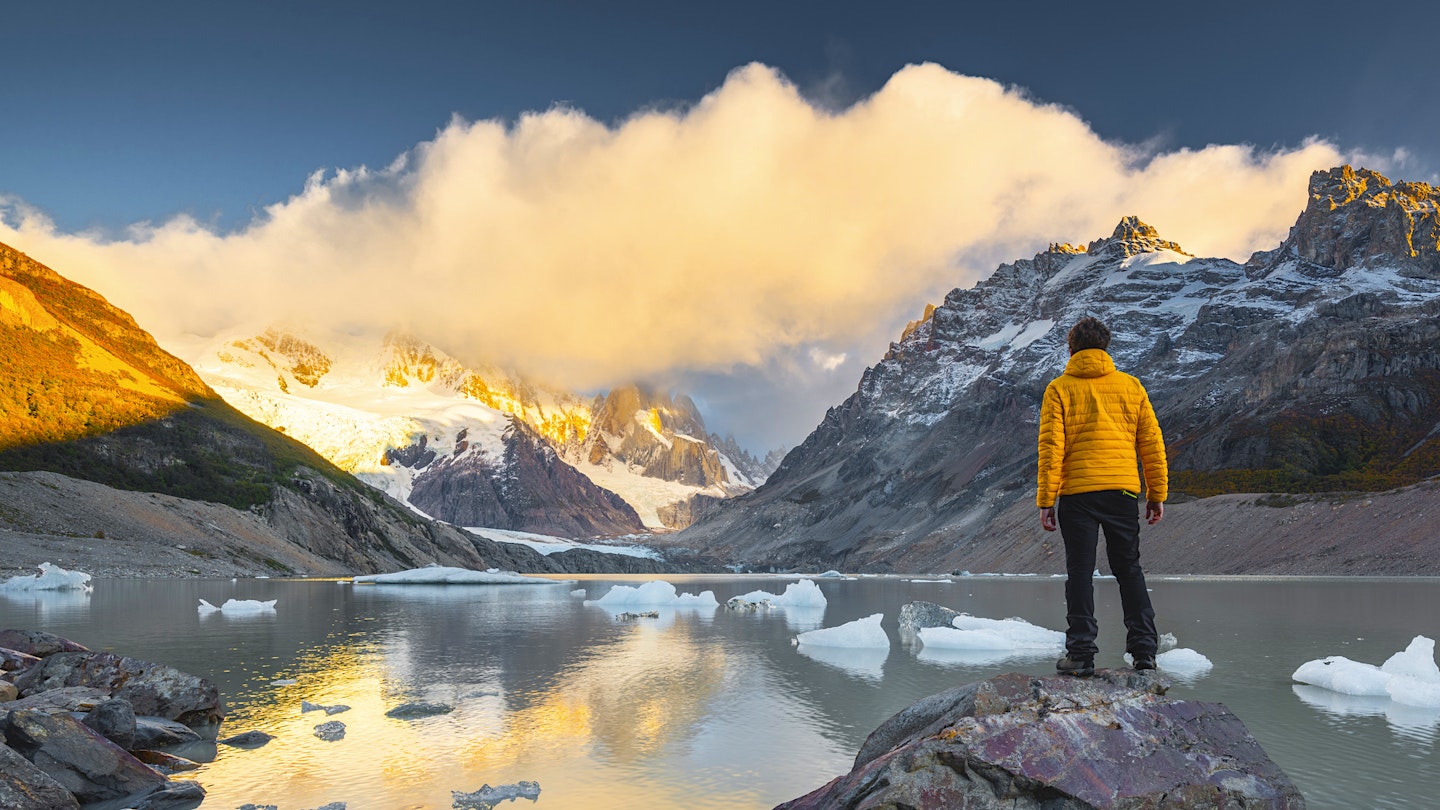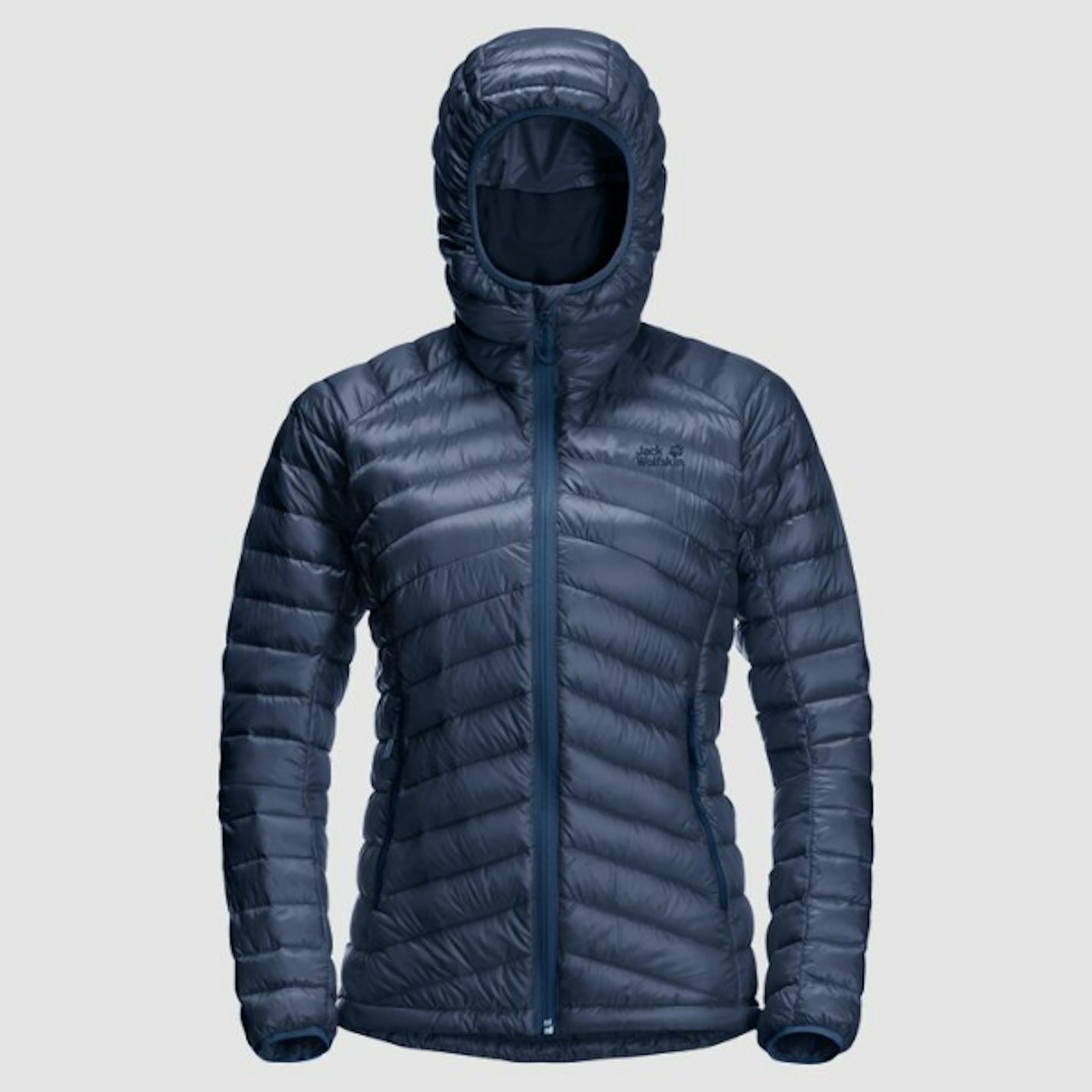When it comes to staying warm on a bitter winter's day walk, hike or run - down jackets are the way to go.
Down jackets provide you with a warm, heat-insulating layer that is lightweight, and thus easy to pack away on hikes and camps. These jackets are hugely efficient protection against cold weather, and if cared for correctly, can last you for countless adventures.
What is a down jacket?
A down jacket is a jacket insulated with soft down feathers from a waterbird, such as a duck or a goose. Synthetic options are also available.
Down is used because of its inherent properties: it’s light, low-bulk and an excellent insulator. Goose down is widely held as the best fill for jackets due to its weight and warmth. A close second is a duck down, which is slightly cheaper. It is not unusual for manufacturers to blend the two downs.
Synthetic down is readily available as an alternative to duck and gooses down. It’s vegan and cheaper, though it’s slightly heavier and not as efficient at insulating as the animal product. Often, these jackets are simply referred to as "insulated", however, the design and use-case for the apparel is that of a traditional down jacket.
While down jackets are a favourite of ours for general use and hiking, they are not typically waterproof and will no longer insulate when wet. This is why down jackets are best used as part of a layering system, with a reliable waterproof shell jacket being on hand for when the wet weather rolls in. You can read about the best waterproof jackets here.
Jump to:
Why should you use a down jacket?
Down stuffed jackets, as we will discuss, come in varying densities and therefore carry varying degrees of warmth-giving abilities, but they all work on the same principle - thousands of tiny air pockets are trapped in the down, capturing warm air and keeping your body heat in place.
If you're a winter walker, snow hiker or frozen mountain scrambler, a down jacket offers an excellent solution for you. They’re light, efficient and reliable, and can be easily stowed into a backpack with little to no trouble.
It has to be said the effectiveness of a down jacket is sometimes reflected in its price. However, have no fear. You don’t need to lay a golden egg to afford one - we’ve taken the stress out of bargain hunting for you and tested the best budget down jackets available to bring you a selection of the best.
Heading off for a fell walk? You'll need to think about a decent 30-35 litre rucksack to carry all the essentials.
Related: Best Gore-Tex waterproof trousers
The best down jackets:
Patagonia Down Sweater Hoody
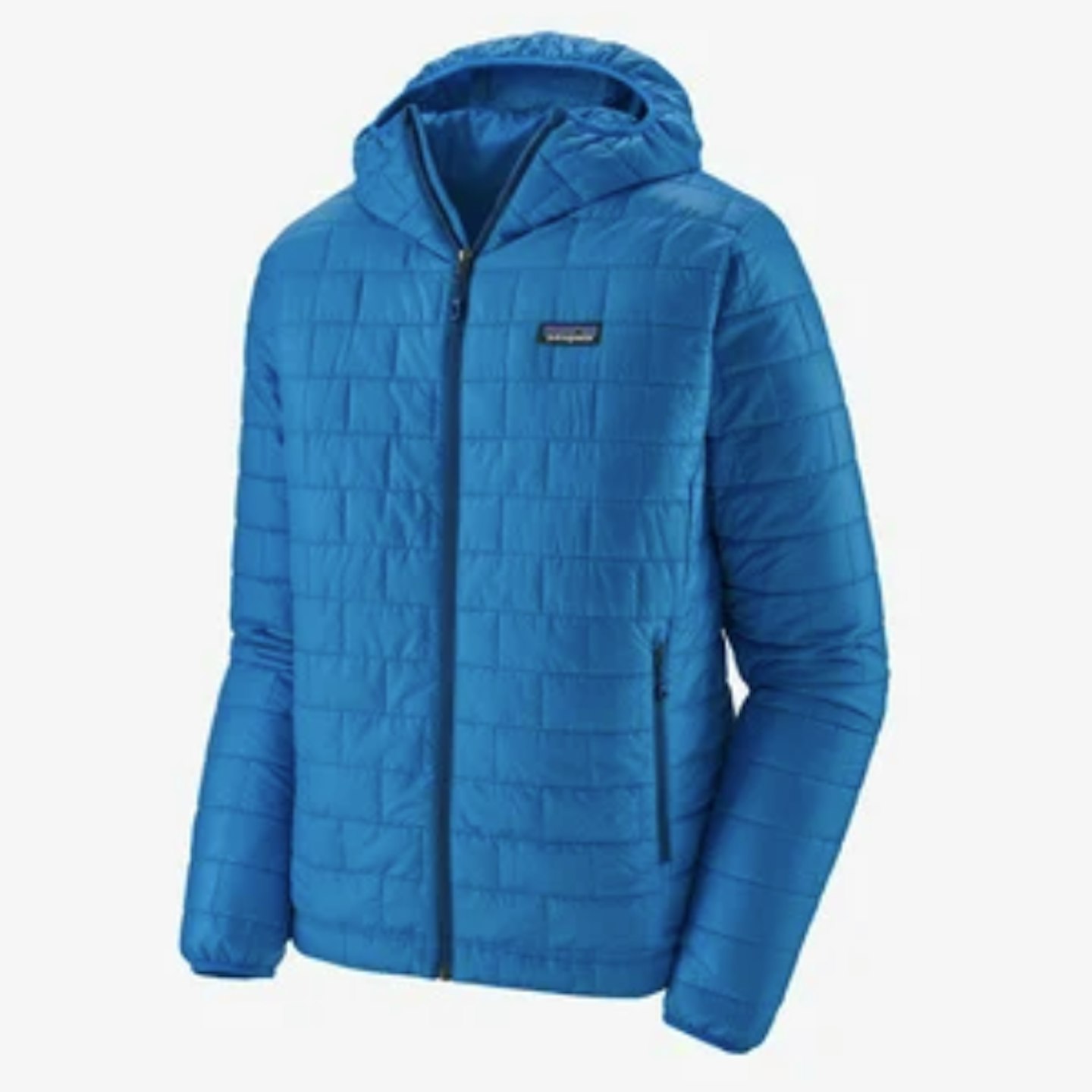
www.cotswoldoutdoor.com
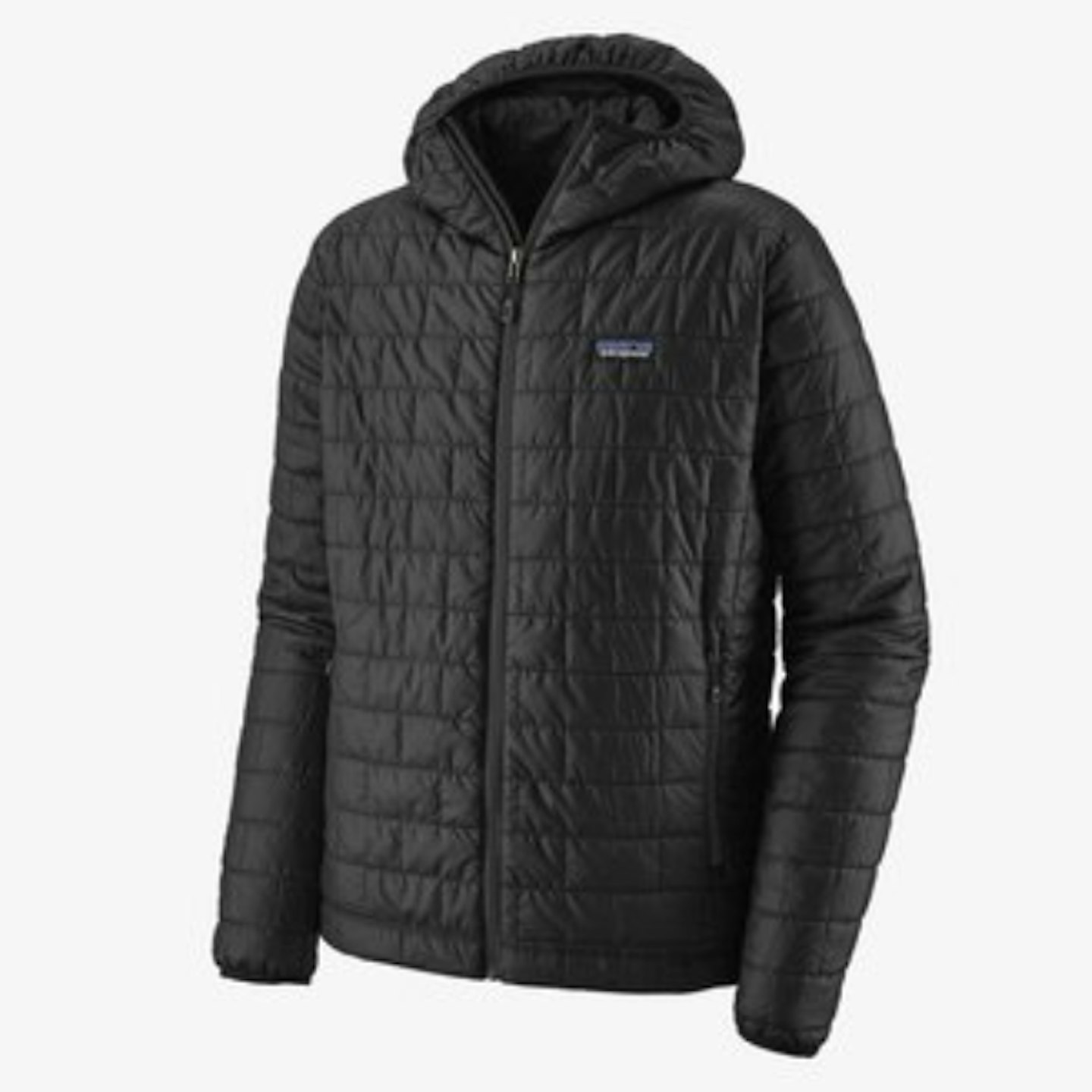
www.cotswoldoutdoor.com
Verdict: A good down jacket for carrying in a rucksack onto the hill, but it's not the warmest and so not ideal for longer periods of use in colder weather.
There’s a good combination of features in the Patagonia Down Sweater Hoody. The 800-fill-power Advanced Global Traceable Down is produced to limit animal welfare concerns and is perfect for general cold weather use. There’s a hood with a rear drawcord that extends around the forehead to improve mobility. It’s small, lightweight and great for stashing in a pack.
Weight: 428g
Review: "Bought this 3 years ago and it's still going strong. Really warm when it's cold but not sweaty when it's mild. Great fit and quality and the most ethical down fill used by Patagonia. Worth every penny."
Rab Microlight Alpine ECO Jacket

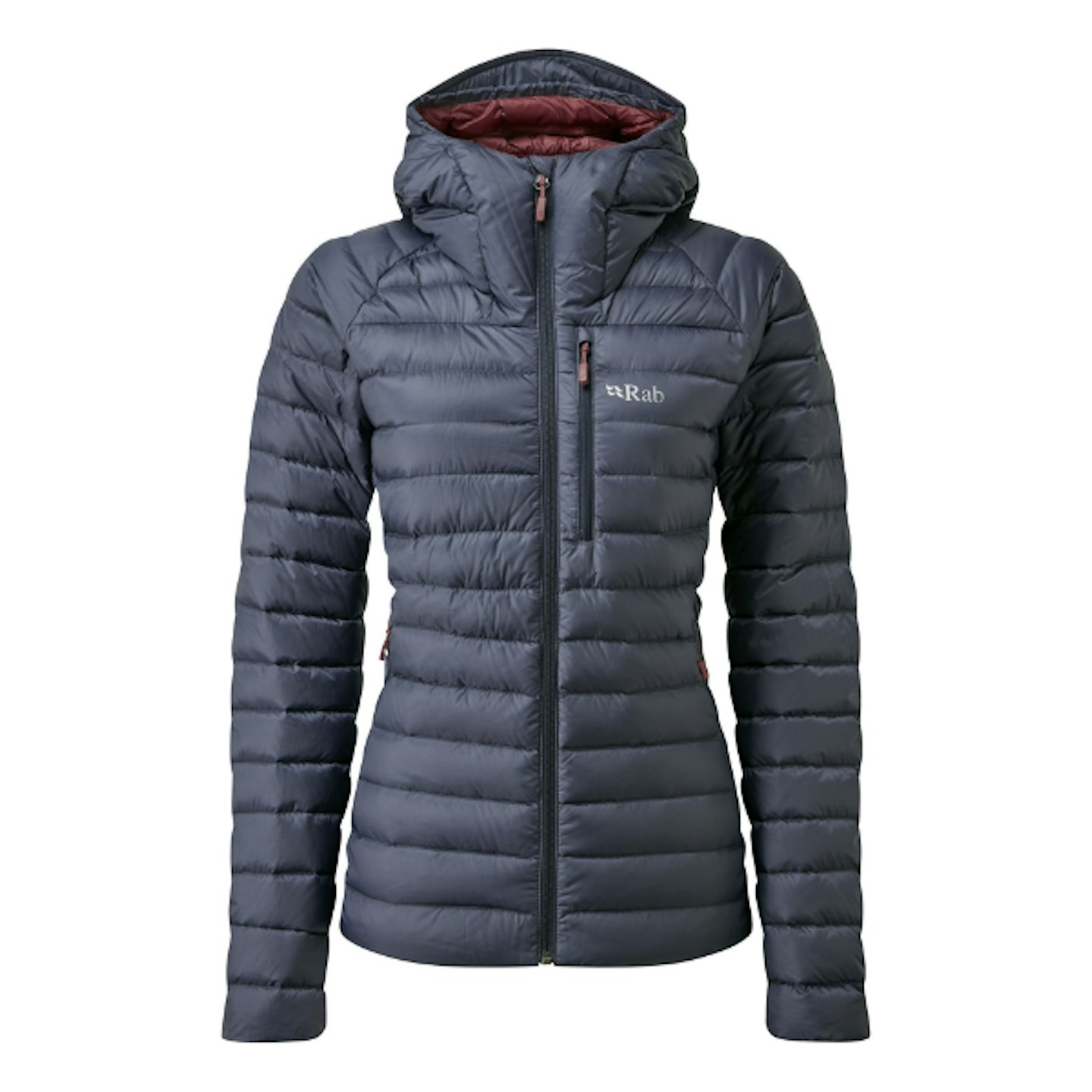
www.cotswoldoutdoor.com
Verdict: A great mid-range down jacket with welcome green credentials. Well-featured, stylish and relatively unbulky.
Without a doubt, one of the best elements of the jacket is the 700-fill-power down. It has been reclaimed and recycled, upping the green credentials considerably. Not only is this great for animal welfare, but also excellent for warmth and weight. Micro and nano baffles are present throughout to help maintain insulation distribution. The jacket’s outer is Pertex Quantum ripstop for added peace of mind and weather resistance.
Weight: 470g
**Review: "**Very lightweight, very warm, the snug fit makes it more practical. Easy to pack away in the included stuff sack."
Finisterre Nimbus Insulated Jacket
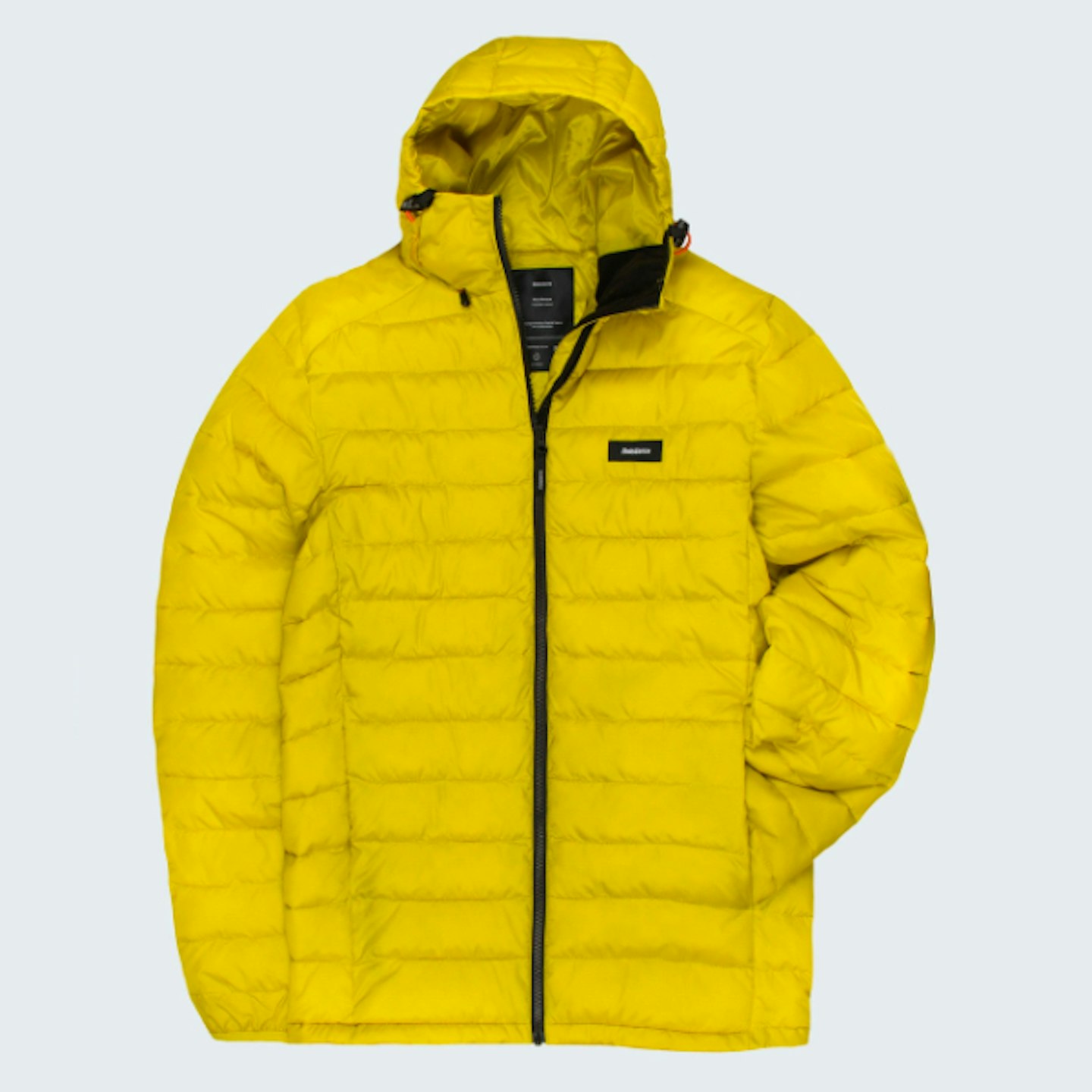
finisterre.com
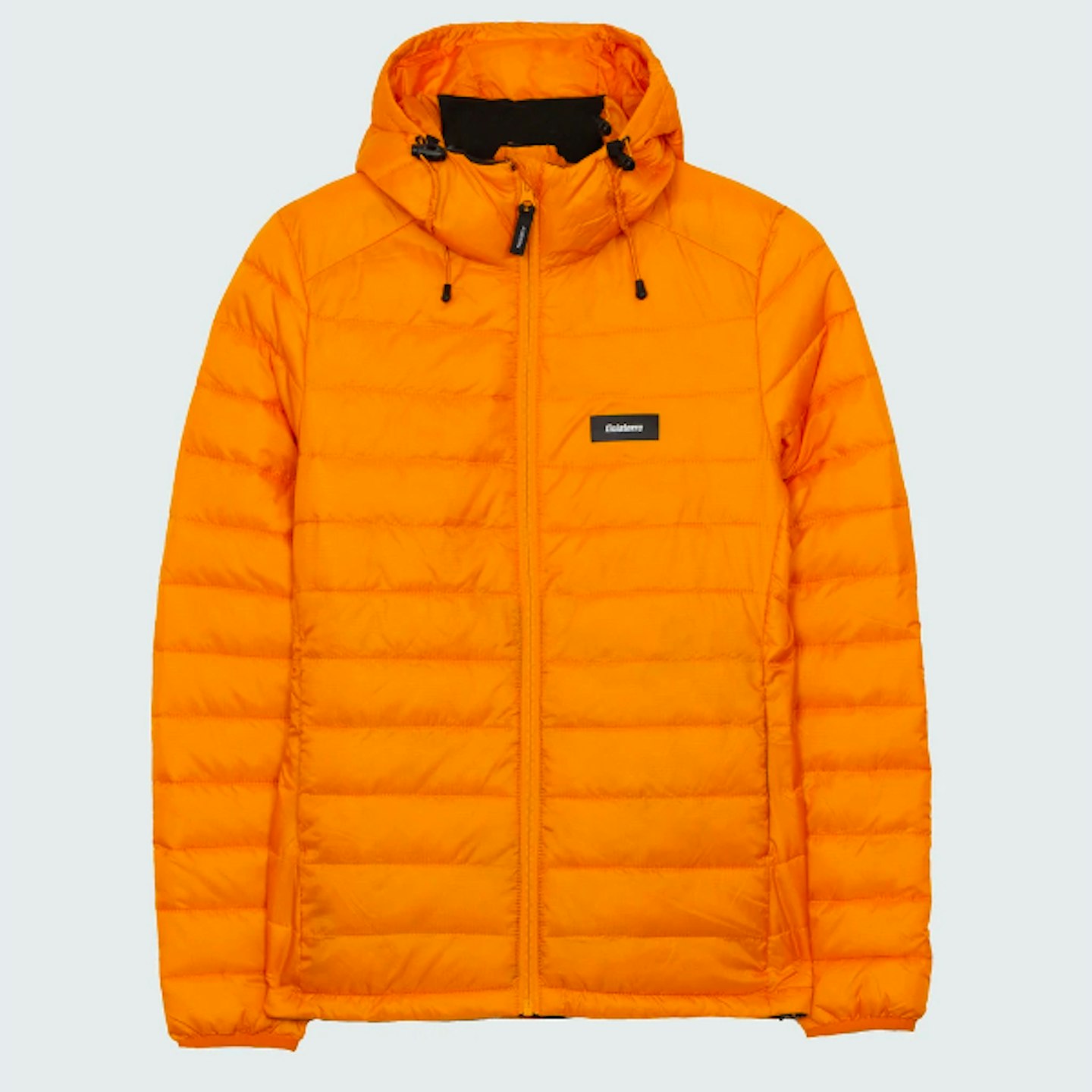
finisterre.com
Verdict: A stylish, lightweight and efficient jacket for hiking. Its sustainable animal-free production is just the icing on the cake.
If you like the idea of a down jacket but would prefer to keep animals out of the equation, then Finisterre has the answer. The insulation used by the sustainability-focused brand is made of only organic and recycled materials. This fill is just as warm as standard down, but with better heat performance when wet (60% better, apparently).
The Nimbus uses this insulation (equal to 4.3 togs) and couples it with an outer layer of the jacket that will stand up against light drizzle and showers. The Nimbus is also pleasantly breathable. It’s easy to store too - when you’re not wearing it, it can pack away into its own chest pocket. It’s available in four excellent colours, too.
If you’re heading off to really chilly climes and you like the Finisterre philosophy, we recommend bumping up your purchase to the Nebulas Insulated Jacket for £195 (Men's/Women's). It’s warmer than the Nimbus, but it’s a tad bulkier.
Weight: 475g
Review: "Already own a number of Finisterre jackets however this is quickly becoming my go-to jacket. Amazing quality as always by Finisterre and colour.
The jacket is surprisingly warm for how lightweight it is. Suitable for the winter months with another layer underneath and will be ideal for spring or autumn. Love what the Finisterre brand stands for and it's quickly becoming my go-to clothing brand."
Rab Neutrino Pro
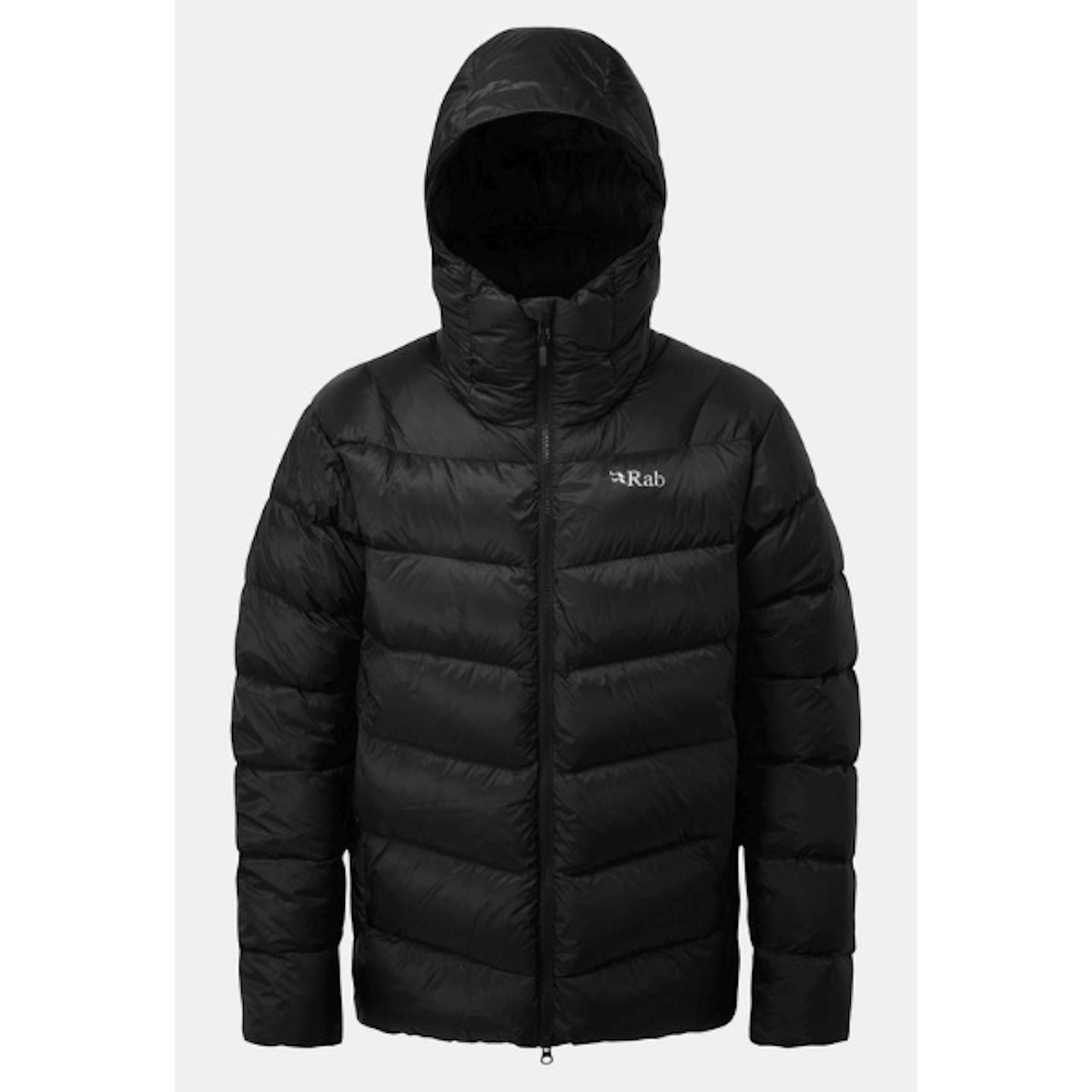
www.gooutdoors.co.uk
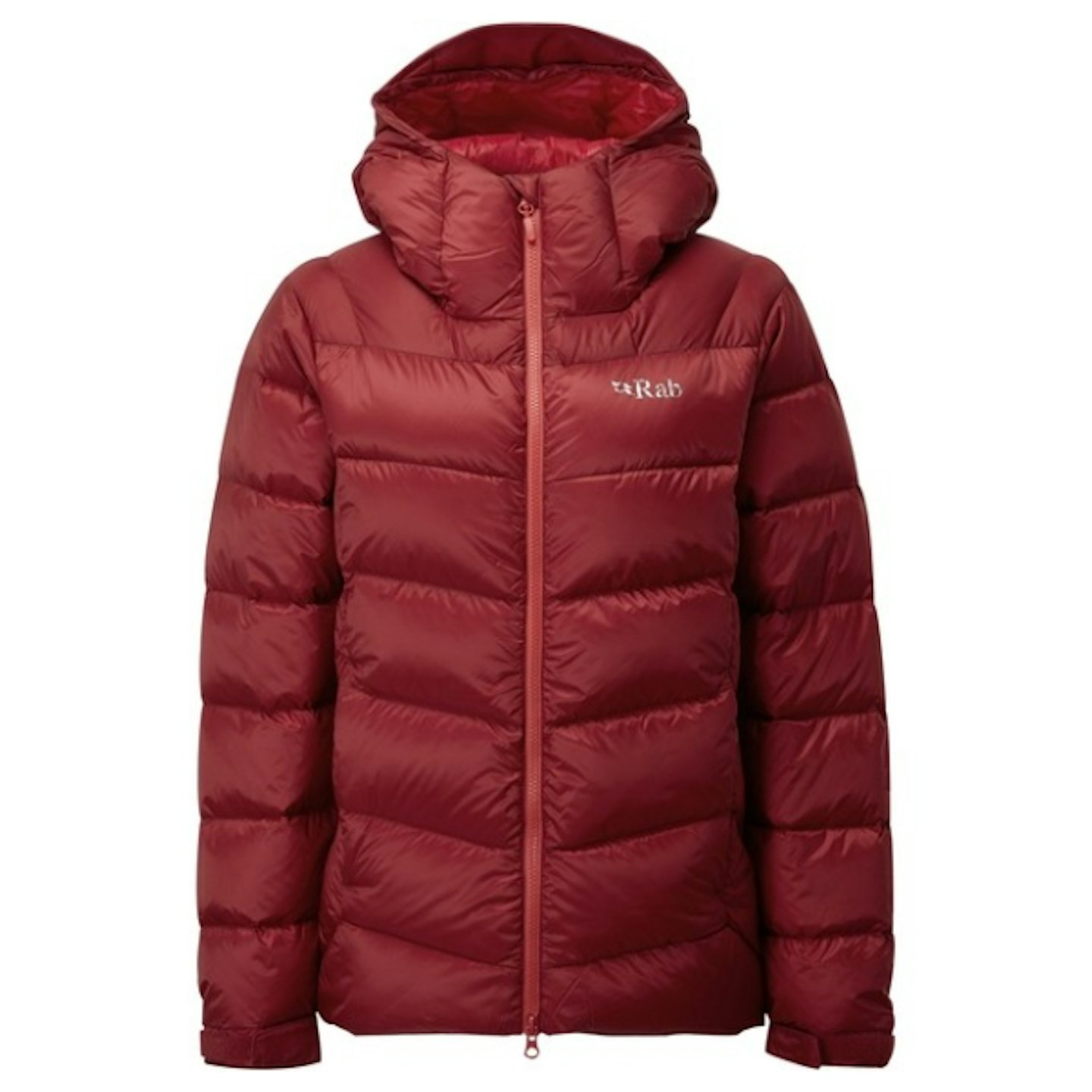
Verdict: A well-insulated jacket with great weather protections for true mountainside warmth. If you suffer in the cold, it’s worth the extra weight.
The Rab Neutrino Pro down jacket is an excellent jacket to protect against harsh chills and winter weather. Its 800-fill-power down is a highly efficient insulator and the stitch-through construction promises a long life for the jacket. The Neutrino Pro goes a little further than some of its competitors, using a Pertex Quantum Pro shell to improve weather resistance. It’s a bit heavier than some options and too much for hikes and daily use, but those heading out into really cold climbs will be glad of the protection.
Weight: 605g
**Review: "**An absolute delight to wear this coat. Feels good, is very comfortable and it keeps me warm. I even bought one for my Dad and he absolutely loves it. The hood pockets everything about this coat sings quality."
Arc’teryx Cerium LT Hoody
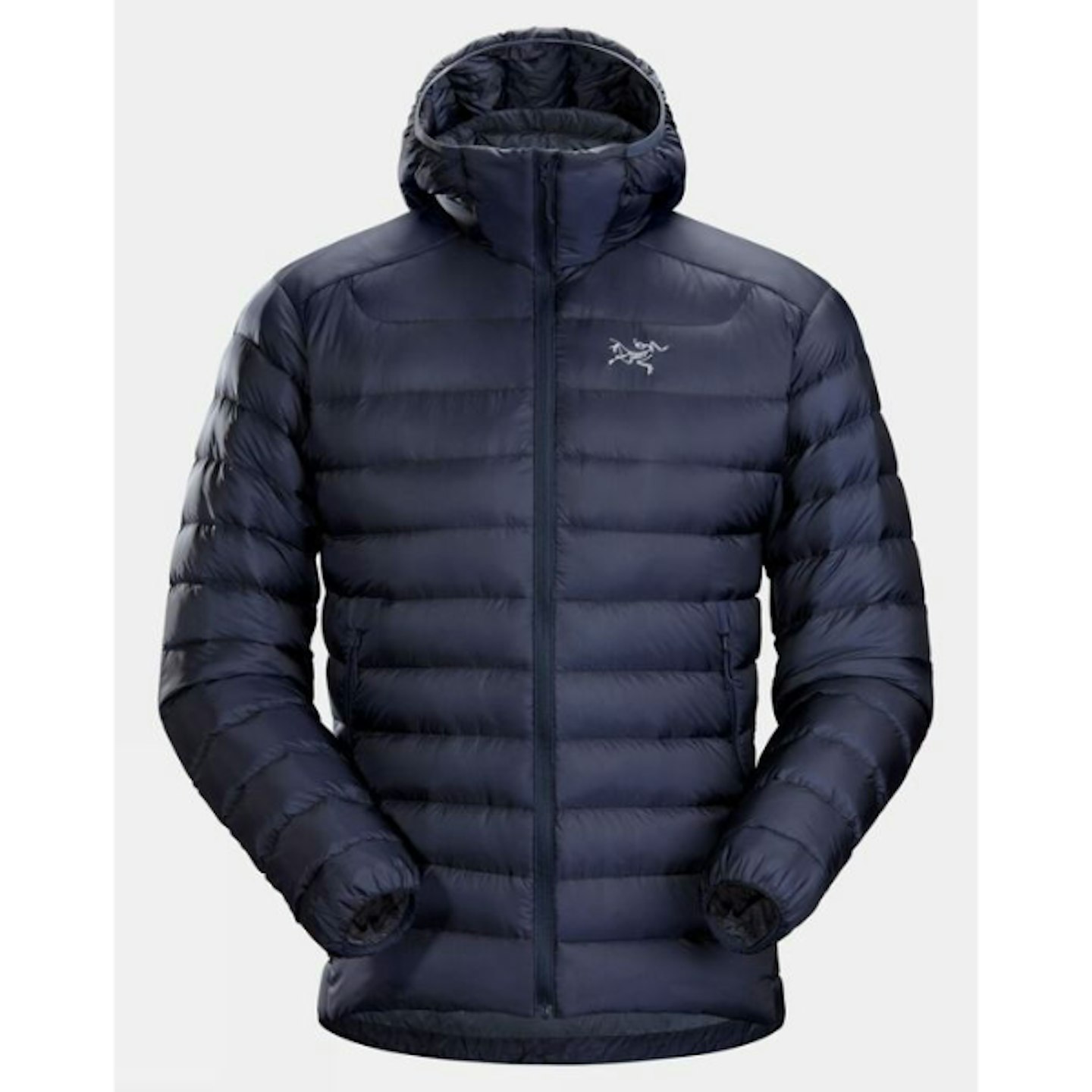
arcteryx.com
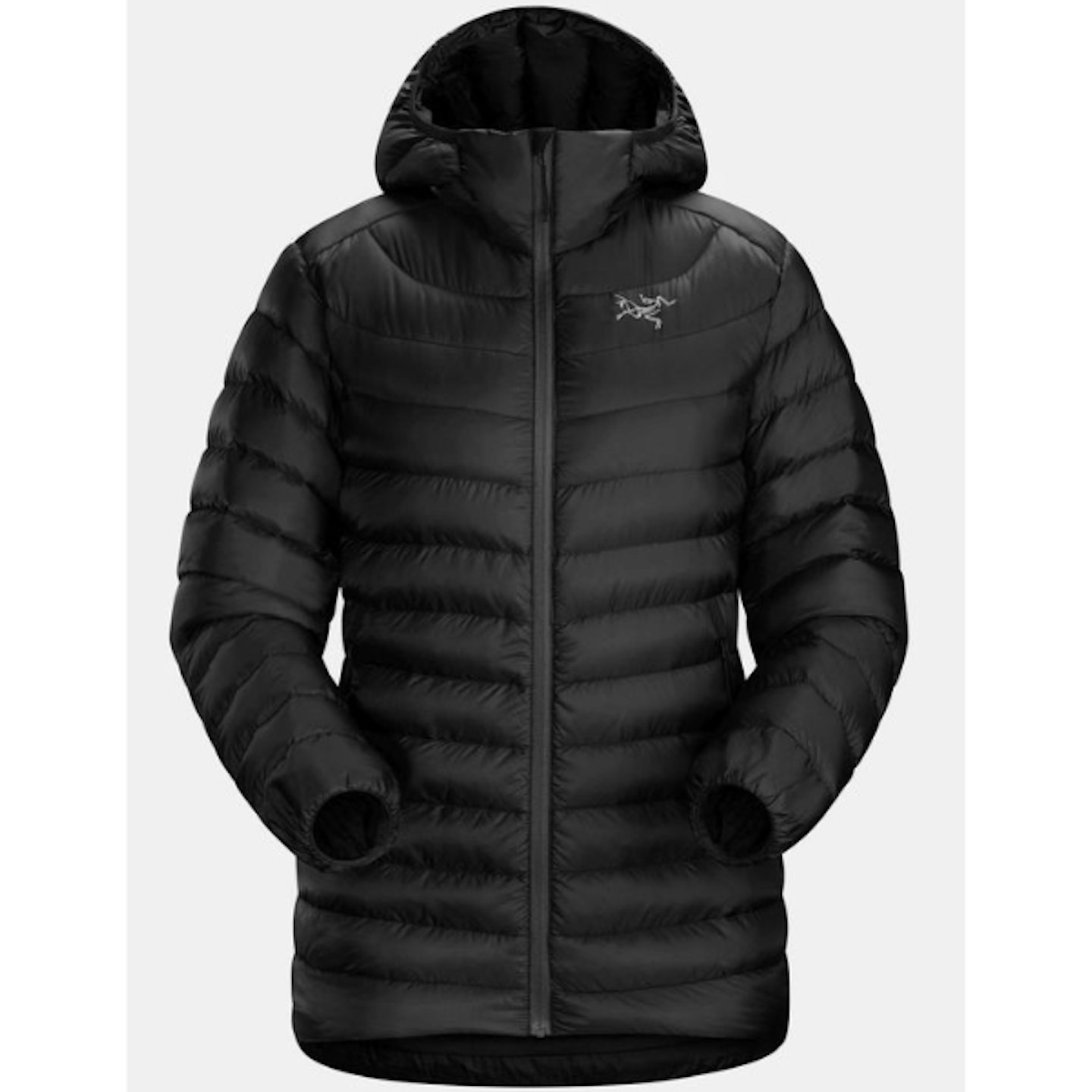
www.cotswoldoutdoor.com
Verdict: With a close fit and clever insulation distribution, the Arc’teryx Cerium is the best lightweight down jacket available. It’s not going to hold up against the coldest weather, but it’s great for chilly walks and autumnal climbs.
For a slim-fitting close-cut down jacket, look no further than the Arc’teryx Cerium hoody. It carries 850-fill European goose down across the core areas of the body and a breathable Coreloft 80 synthetic insulation elsewhere for improved moisture prevention - it’s a great layering option for steep climbs. It’s also super lightweight, so it’s going to stash in a rucksack without any worries.
The close fit is great for slipping under waterproof layers, but it does limit what can go underneath - fans of layering a fleece under their down jacket might want to look for looser cut jackets.
Weight: 305g
**Review: "**Feels like a premium piece, you can tell it’s been well made from the quality of the construction. The garment is also light as a feather. The storm hood feature is also great, cinching down around your head to keep you nice and toasty. Overall incredibly comfortable and snazzy bit of kit."
Patagonia Nano Puff Hoody


Verdict: A most compelling alternative to traditional down jackets, with impressive warmth, quality and price tag.
The Patagonia Nano Puff is a well-presented and accomplished synthetic alternative to animal down jackets. It’s filled with PrimaLoft Gold, a material made with 55 per cent recycled polyester, which creates tiny air pockets to emulate the heat-trapping nature of down. It’s very successful and, getting one up over most down, it maintains its insulation even when wet. Another win for the green amongst us is the outer shell, which is 100 per cent recycled ripstop with water repellent coating.
Weight: 284g
**Review: "**Very warm for the extremely lightweight. Ideal as a mid-layer in more extreme conditions or great on its own in milder dry weather. The fit is excellent and has a good amount of give and the hood is a good snug fit too."
Jack Wolfskin Mountain Down Jacket
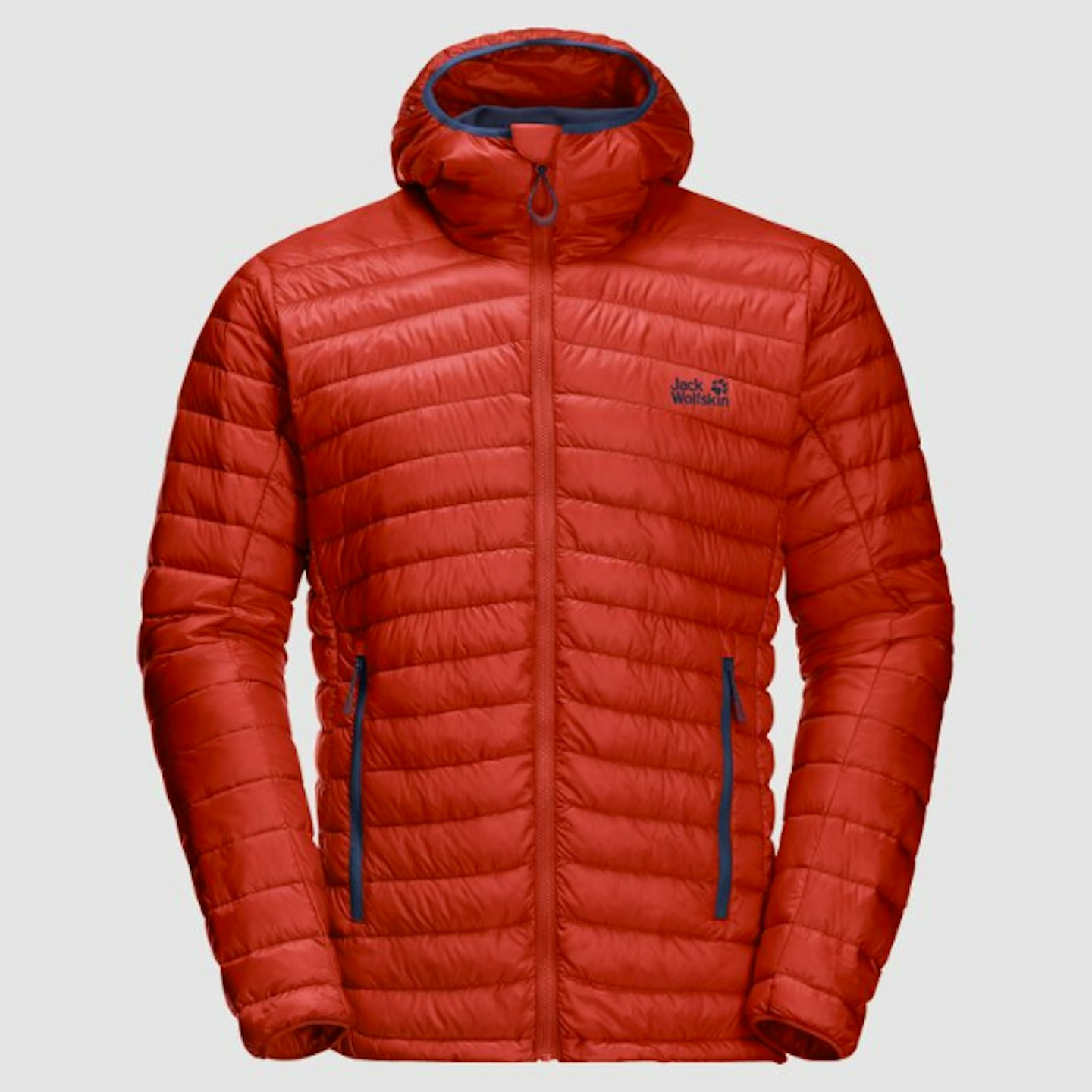
www.jack-wolfskin.co.uk
Verdict: A great mid-weight jacket with thoughtful application of material and a robust build.
The Jack Wolfskin Mountain Down Jacket is as impressive as it is brightly coloured. It’s filled with 700-fill-power duck down and Microguard Ecosphere 40 g/m lining for optimised heat-retention. The outer shell is Stormlock 15D Ripstop, a material developed to defend against wear, water and wind. Hikers and travellers will also be pleased to learn that it’s a lightweight jacket, coming in comfortably under 400g.
Weight: 318g
Review: "All of it is perfect. Deep pockets, windproof warm but not sweaty. Highly visible. Perfect for biking."
Berghaus Tephra Reflect Insulated Down Jacket
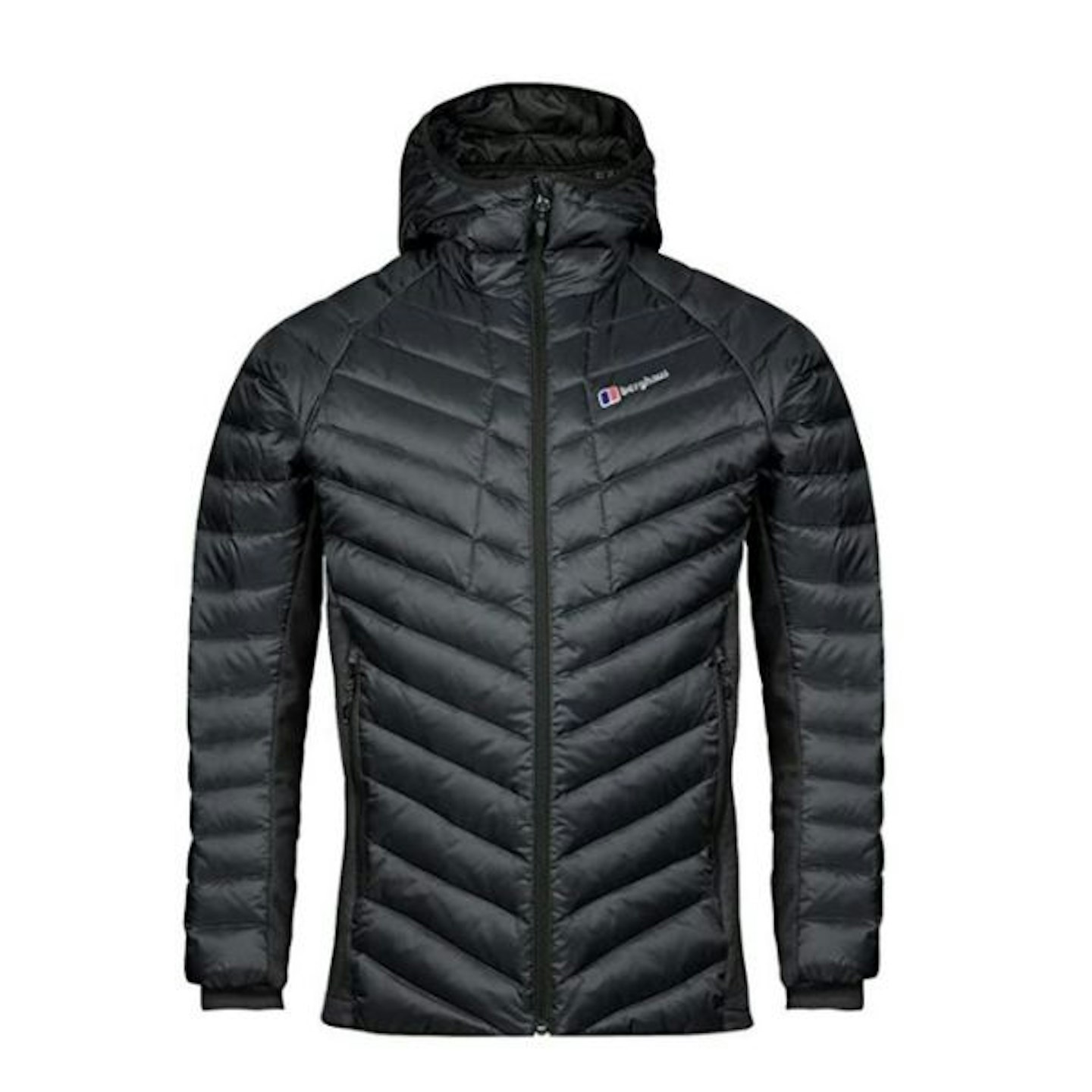
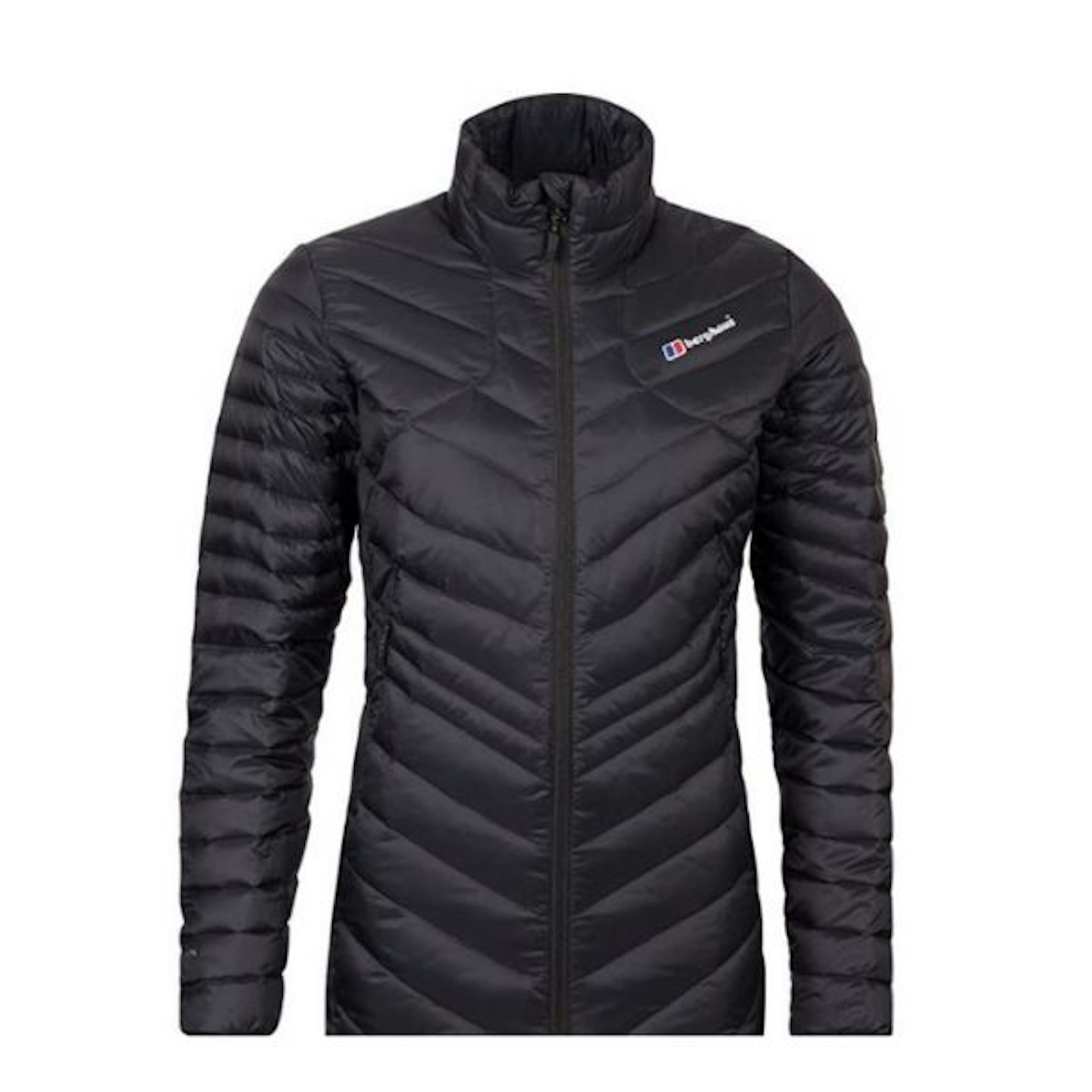
Verdict: A well made, comfortable and lightweight jacket that holds up well against wind and rain. Best for those who prefer a snug fit.
Berghaus' offering is simple, warm and efficient. Filled with 600 fill power Hydrodown, this jacket will keep you warm and dry, even in the harshest conditions. The gale-proof Pertex Quantum is completely windproof, and the ultra-light reflect technology helps direct body heat back to your core, keeping you up to 20 per cent warmer,
Weight: 440g
Review: "I originally bought this to go up Mount Kilimanjaro. It was quite a cold trip and I found the jacket to be very warm even though it’s quite thin. I wore it on the way up and for the final ascent day (along with a base layer and rugby jersey) and found it to be adequate. I now wear it out and about and for walking the dog and it’s suitably warm."
Related: The best men's waterproof jacket | The best women's waterproof jacket
What to look out for when you’re buying a new down jacket:
Chin guard
In cold weather, a soft panel of material at the top of the jacket zip to protect the chin is a really welcome feature. Jackets can have either a very wide panel of soft material, a small strip of soft material and or none.
Insulation
All the jackets featured here incorporate down insulation, which is more efficient than synthetic insulation. The warmth of down is measured by its 'fill power', which is a measure of the loft or ‘fluffiness’ of the down; for example, 800 fill power down is fluffier and traps more air, and therefore you need less of it for the same insulation than a 600 fill power down. A lower fill power down will need to be heavier and bulkier in order to achieve the same level of insulation as higher fill power. However, there are other factors such as jacket construction and fit that affect a jacket’s warmth.
Draught exclusion
To stay warm, you need to trap warm air inside the jacket. But this is difficult if air can escape through the hem, around the cuffs or even through the front zip. So, look for a baffle behind the main zip, drawcords at the hem and elasticated or ideally adjustable cuffs to trap warm air inside the jacket.
Hoods
To stay warm in cold weather you also need to protect your head from heat loss. It’s often the hood design that divides the best jackets from the runners up. Look for a hood that can be adjusted to fit without obscuring your vision and moves with your head when you turn to look around. A wired or stiffened peak is a welcome bonus to allow easy vision in the wind or spindrift.
Water resistance
Down loses some of its insulating ability when wet. To overcome this, down insulated jackets will sometimes feature specially treated water-resistant down, or enhanced water-resistant or hydrophobic (water-hating) outers. As seams will leak, only a waterproof jacket with taped seams is guaranteed to keep the insulation dry, so you may need to wear a waterproof jacket over your down insulated jacket.
How to wash a down jacket
Washing a down jacket can be a daunting task for the uninitiated. If washed incorrectly, the down fill can clump together and lose its warming 'poof', known as loft.
However, with the right detergent and enough time, it’s a surprisingly easy process.
You will need:
• Down-specific detergent for non-synthetic fills
• Tennis balls or washer balls
• A washing machine
• A tumble dryer with delicate setting, or 48-hours of warm weather and a washing line
Grangers Down Wash Kit is a cleaning bundle that comes with down detergent and two dryer balls. Alternatively, there’s the Nikwax Down Wash Specialist Technical Cleaner, a highly reputable option available in sizes up to 1L.
For a step-by-step guide on how to spot clean a down jacket and how to fully wash a down jacket, we recommend this quick video from Macpac:
How to dry a down jacket
How a down jacket is dried is just as important as how it's washed. It’s not a hard process, but if done incorrectly, the filling of a down jacket will clump and lose its insulating properties.
After washing a down jacket (check out the above guide on washing from Macpac), a down jacket will need wringing out and rolling in a towel. Then, it’s to be placed inside out into a tumble dryer on a low heat setting, along with some tennis balls or washer balls.
Occasionally check on the jacket and give it a good shake. Repeat until dry and the down loft has returned - this could take a few hours.
Alternatively, the jacket can be placed on a coat hanger for a couple of days in sunny, warm weather. Don’t forget to keep shaking it, though!
What to read next
William Lobley is a Senior Content Writer for WhatsTheBest, specialising in technology, gaming and outdoors. He also writes for Empire Online.
Subscribe to the What’s The Best Newsletter to keep up to date with more of the latest reviews and recommendations from the rest of the What’s The Best team.
